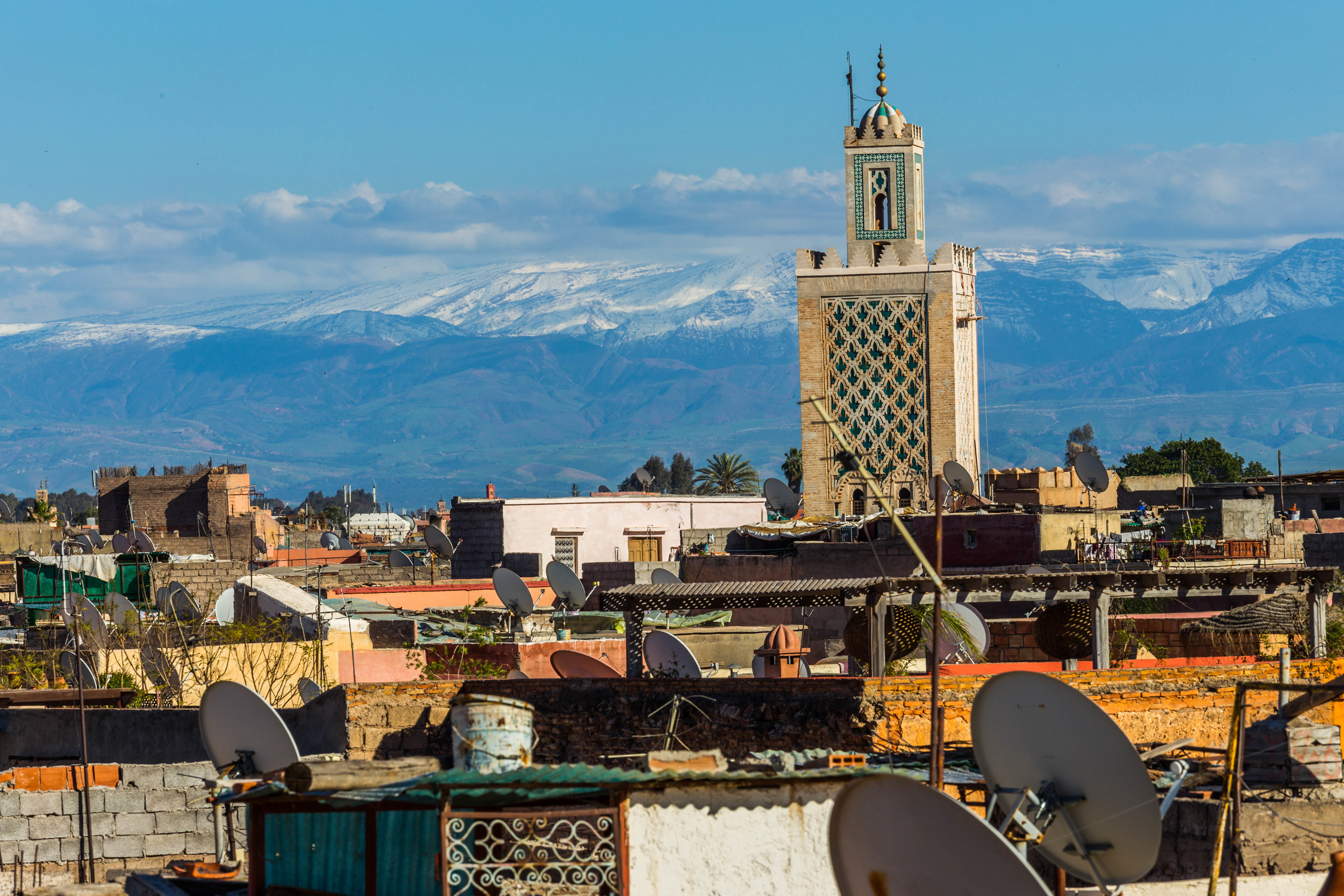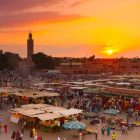
Getaway to Morocco
Day 1 – Arrival in Casablanca – Fes
Upon arrival in Casablanca; the largest city in the country we will visit the Hassan II Grand Mosque. Any tourist can enter this mosque. When you finish visiting this great mosque, you will be transferred to Fez. We will spend this night and dinner at a local hotel. .
Day 2 – Fes – Guided tour of the city
A full day guided tour is scheduled for today. Fez is the intellectual capital of the kingdom and was considered the Mecca of the West and Athena of Africa. It is the largest city in the country after Casablanca with a population of approximately 1 million. This city is a former capital and one of the four imperial cities of the country. Fez comprises three distinct parts, Fes el Bali which is the oldest part surrounded by a great wall, where there are more than 9000 narrow streets and allies. Fes-Jdid or the new Fez, home to the Mellah, the Jewish quarter and the Ville Nouvelle, the newest section of Fez created during the French occupation. Fez el Bali is a UNESCO World Heritage Site.
Day 3 – Fes Ifran – Midelt – Erfoud Merzouga desert (Erg Chebbi)
Today we head south through the Berber city of Ifran, which means caves and is nicknamed in Morocco as a little Switzerland. Ifran is well known as The Brotherhood private university, established in 1997 by King Hassan II of Morocco and King Fahd of Saudi Arabia. Lunch will be scheduled in a Berber town called Midelt. From the vast plateau we start to cross those harsh mountains which are still inhabited by the Berber community. Landscapes here include palm oases at Jbel Ayachi (3,747 m). We will pass through the cities of Errachidia and Erfoud, famous for their ceramics and fossils (important industry in Erfoud, about 350 million years ago, the region around Erfoud was part of the huge ocean). Heading to the red sand dunes of Merzouga via Rissani, the hometown of the Alawite dynasty where Sheriff Moulay Ali began to unify Morocco under his red flag in the early 17th century. From a vast plateau, you will be impressed by the huge sand dunes of Merzouga that appear on the horizon. Here we will spend the night in a riad.
Day 4 – Merzouga – Rissani – Todra Gorges
We get up early in the morning to enjoy the mesmerizing sunrise, then we ride our camels back to our hotel for a quick shower and breakfast. We head to Risani to visit the mausoleum of the founder of the Alawite dynasty of Morocco, Moulay Ali Chrif in the 17th century. This silent city was the ancient capital of Tafilalet and its location as a crossroads between north and south brought the city to the status of a former major caravan center. We then head to the Todgha Gorges, situated beyond the central High Atlas Mountains. Here you can enjoy a walk among those fabulous canyons. Night and dinner in a Kasbah hotel between the great canyons.
Day 5 – Todra Gorges – Dades Valley – Skoura – Ouarzazate
From Todgha we go along the road of 1000 Thousand Kasbahs, and we pass a town called Boumalen situated on the edge of the Dades Valley rising up in the High Atlas Mountains. Along this valley appears another valley called Valle de Rosas with the green color of its alfalfa, olive, fig and grape plants. The locals here celebrate this rose by organizing a national festival every April. We will visit Skoura and drive along its palm groves. In the middle of huge palm trees appears the Kasbah of Amridil with its mud walls and ramparts. We arrive at Ouarzazate (Hollywood of Africa, Silent Town, The Gate of the Desert), it is a city located in the middle of a bare plateau.
Day 6 – Ouarzazate Ait Ben Haddou – High Atlas Mountains – Marrakech
Ouarzazate is mainly inhabited by Berbers, who built many of the kasbahs and prominent buildings for which the area is known. One such building is Taourirt Kasbah. Why is Ouarzazate nicknamed the Hollywood of Africa? Because it has stood out as a film-making location, with the largest studios in Morocco inviting many international film companies to shoot their films such as: Lawrence of Arabia (1962), The Living Daylights (1987), The Last Temptation of Christ (1988), The Mummy (1999), Gladiator (2000), The Kingdom of Heaven (2005) and Babel (2005). Later we head to the city of Ait Benhaddou. The Ben Haddou kasbah has been a UNESCO World Heritage Site since 1987 and several films have been shot there, including Lawrence of Arabia (1962), Time Bandits (1981), The Jewel of the Nile (1985), Kundun (1997). Gladiator and (2000) Alexander (2004).
Day 7 – Marrakech – Guided tour of the city
A guided tour is scheduled for today in Marrakech. This red city was the ancient imperial city most important in the history of Morocco. Marrakech is located near the foothills of the snow-capped peaks of the High Atlas Mountain. Marrakech comprises both an ancient fortified city, the Medina, and a very modern city called Gueliz. Marrakech has the largest traditional market (souk) in Morocco and also has one of the busiest squares in Africa and the world called Djemaa el Fna. The square is filled with storytellers, water vendors, dancers, snake charmers, and musicians. During the night the square turns into a huge open-air restaurant. We will visit the Koutoubia Mosque. Marrakech was dominated in the first half of the 20th century by T’hami El Glaoui, “Lord of the Atlas”, and Pasha of Marrakech. There is still a house called Dar Pacha El Glaoui from where he used to rule the entire southern part of Morocco.
Day 8 – Marrakech – Casablanca Airport
Today, depending on your flight, you will be transferred to Casablanca airport to attend your flight.
Includes
– Private trip, there will be no more people with you.
– Pick up at the hotel, riad, airport or wherever you want.
– Transportation during the trip in an all-terrain vehicle with AC.
– Fuel
Does not include
– Flights
– Midday meals
– Beverages
– Tickets to kasbah
– Tips and what is not in the program


